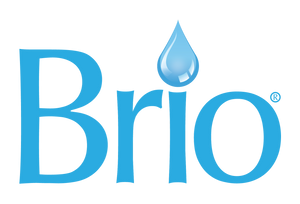Whether you want to improve the water quality in your bathroom, kitchen, laundry room, or any other place in your home or office, an inline water filter system can change the game.
Economical, easy to install, and effective, an inline water filter may be the best choice for your application. Here's how to select one and ensure it continues to work as expected.
How Does an Inline Water System Work?

If you haven’t seen an inline water filter, it resembles a canister-like cartridge. Users can hook these filters directly to any water line as they often have an NPT (national pipe thread) or a QC (quick-connect) fitting on each end.
The filters can be installed on any cold water line. There are also some specialty designs for hot water lines, too. Typically, they include an inline activated carbon filter, which helps remove trace chemicals to improve the smell and taste of your drinking water. You can also source inline filters with enhanced dirt-holding capacity for extended cartridge life and those that offer reverse osmosis technology for ultimate purification.
Since inline filtration systems remove chlorine and other contaminants, they are also ideal for unique applications, like when you have a fish tank (in this case, you’ll need to add a deionization filter to your system). Bathrooms often need a chlorine-removal system to avoid drying out skin and hair. These filters are often part of a larger system, often requiring several filters throughout your setup.
What will Inline Water Filters Remove?

What you will aim to eliminate will depend on your water source. For example, municipal tap water sources can contain chlorine, lead, nitrates, arsenic, pharmaceuticals, and forever chemicals. If you live in a rural area with well water, you will likely target bacteria, sediment, and, potentially heavy metals.
Before selecting any water filter system, you’ll want to test your water source to determine the best design based on your needs.
Related: How to Test Your Water at Home
What Does Flow Rate Mean?

When installing and maintaining an inline water filter, “flow rate” refers to the amount of water that passes through the filter in a set time period — most commonly, gallons per minute (GPM). Basically, this rate is determined by how quickly water flows through the filter. The higher the flow rate, the more water can pass through per minute.
Knowing this rate prior to installing matters because you need to find a suitable flow rate to ensure you have enough water flowing without compromising the effectiveness of filtration. Some of the variables that influence this rate include the filter media (such as activated carbon or coconut shell carbon), the size of the filter, and water pressure.
More on Filter Media

When considering filter media, discuss the functions of each with a water filtration expert. For example, you can source granular activated carbon (GAC) or reverse osmosis (RO) filters. Both of these options are inline filters, but they differ. The latter is more effective at removing a wider range of contaminants. A GAC filter will likely do the trick if you want to remove chlorine, organic chemicals, and hydrogen sulfide (which cause a rotten egg smell). However, you'll need an RO filter if you want to remove most total dissolved solids (TDS), bacteria, and fluoride.
Are They Easy to Install?
Since these filters are versatile in design, they are an ideal choice for a range of applications. Yet one of their greatest benefits is how easy they are to install.
Most commonly, households install an inline water filter underneath a sink directly onto the cold water line. Many designs are plug-and-play filters, eliminating the need for water tanks or extensive installation steps.
Maintaining Your Inline Water Filter System
Inline water filters are usually simple to install. However, they do require some maintenance. You need to replace your filters to ensure optimal efficiency. If you don’t swap out your filter within the recommended time frame, it could start to form bacteria, and your applications won’t run as well as they could — nor will the water quality be what you expect.
Depending on how heavily a filter is used, most brands recommend swapping out your inline water filter every 6-12 months. This timeline is recommended for options such as the Brio Premiere Inline U-Type Ultrafiltration Membrane, 14", and the Brio Premiere 5 Micron Inline U-Type Coconut Shell G.A.C Filter, 11". Some products will need to be changed much sooner — often three months. So, finding a filter with a longer lifespan can be a major plus when shopping for options.
The best time to change your filter will depend on these guidelines, but also the quality of your water supply, if you have additional filtration solutions in place, and the amount you use it.
Find the Best Inline Water Filter for You

While inline water filter systems are a go-to for many, they are not the only option. They can also be used in conjunction with other water filtration systems and solutions.
Brio offers a range of products to help you instantly improve the quality of your water. Whether you want a whole house water filtration system or plan to start with an inline water filter based on your water test, Brio is here to help you ensure all your hydration needs are met.
You can also check out these resources:
• How Your Home Can Benefit From the Best Whole House Water Filtration System
• Is Hard Water the Culprit of Your Water Problems?
• PFAS Chemicals: Does Your Tap Water Exceed the New PFAS Limits?




